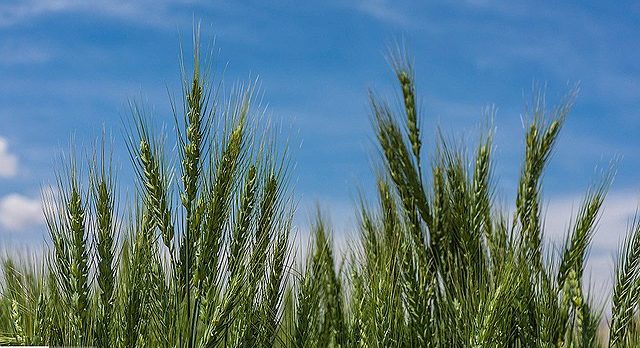India and Pakistan are each rating their spring wheat forecasts downward on oncoming dry weather patterns on the subcontinent.
A Reuters report of February 27, 2025 quoted the India Metrological Department (IMD) stating that March will be “unusually hot.”
IMD will release its monthly temperature schedule February 28 but notes that by mid-March certain states can expect above 40ºC.
Because India’s key crops that include wheat rely on 50% monsoon rain, dry weather usually signals low yields.
If temperature takes toll, supplies could tighten for the fourth season in a row and even relax import controls.
Such an outcome could also project prices, which were already at 33,000 rupees ($377.52) a tonne in Delhi, November 2024. This was above the foregoing season’s minimum support price of 22,750 rupees ($260.26) per tonne.
Pakistan Sheds Output by 11%
Further north, Indus Valley neighbor Pakistan has already tailored information on how far dry weather might hurt production.
According to the Express Tribune, Rabi (spring) wheat output could depreciate by 11% to 27.9 million tonnes.
It will be a lapse to the 2023 season which produced 28.2 million tonnes, and sharp fall from 2024’s 31.4 million tonnes.
Officials are playing safe however on the economic front by basing their wheat pricing protocols on the industry’s cost.
The minimum support price (msp) in 2023 at 3,900 rupees ($13.96) per 40 kg earned farmers 18% profit. This is because its mark-up basis was a production expenditure at 3,304 Pakistani rupees ($11.83).
And as India and Pakistan lower wheat forecasts due to dryness, both countries expect diverse outcomes. For India, this means relaxing import duty, currently at a steep 40%, if imports become necessary. In Pakistan, this could mean spending $1 billion in imports so as to create price stability at home. For more similar bits on both countries, read some extra wheat resources, next.
India and Pakistan Wheat Forecasts Statistics
India and Pakistan rank at positions 2 and 8, respectively, in global wheat production, as of 2022. Both countries have high annual consumption rates of above 24 million tonnes (Pakistan) and 90 million tonnes (India), in the top five worldwide. For this reason, production forecasts have become essential in order to gauge import necessity based on prevailing consumption.
How do India and Pakistan compare in wheat consumption?
In 2021, India consumed 90.198 million tonnes (63.78 kg per capita) of wheat while Pakistan utilized 24.061 million tonnes (100.47 kg per capita). Notably, the per-capita stat is moderate by world standards. However, the total consumption stats for both countries are pretty high, for only China surpasses India while the United States ranks before Pakistan.
How do wheat forecasts compare to actual production?
Forecasts by the U.S. Department of Agriculture (USDA) over the years have mirrored actual production by FAOSTAT, as below:
| Country | Actual Production in Market Year (million tonnes) | USDA Forecast Production in Market Year (million tonnes) |
| Pakistan | ||
| 2023-24 | 31.5 | 28 |
| 2024-25 | – | 28.8 |
| India | ||
| 2019-20 | 103.596 | 103.6 |
| 2020-21 | 107.86 | 107.86 |
| 2021-22 | 109.58 | 109.96 |
| 2022-23 | 107.74 | 104 |
| 2023-24 | 110.55 | 110.55 |
| 2024-25 | – | 113.29 |
